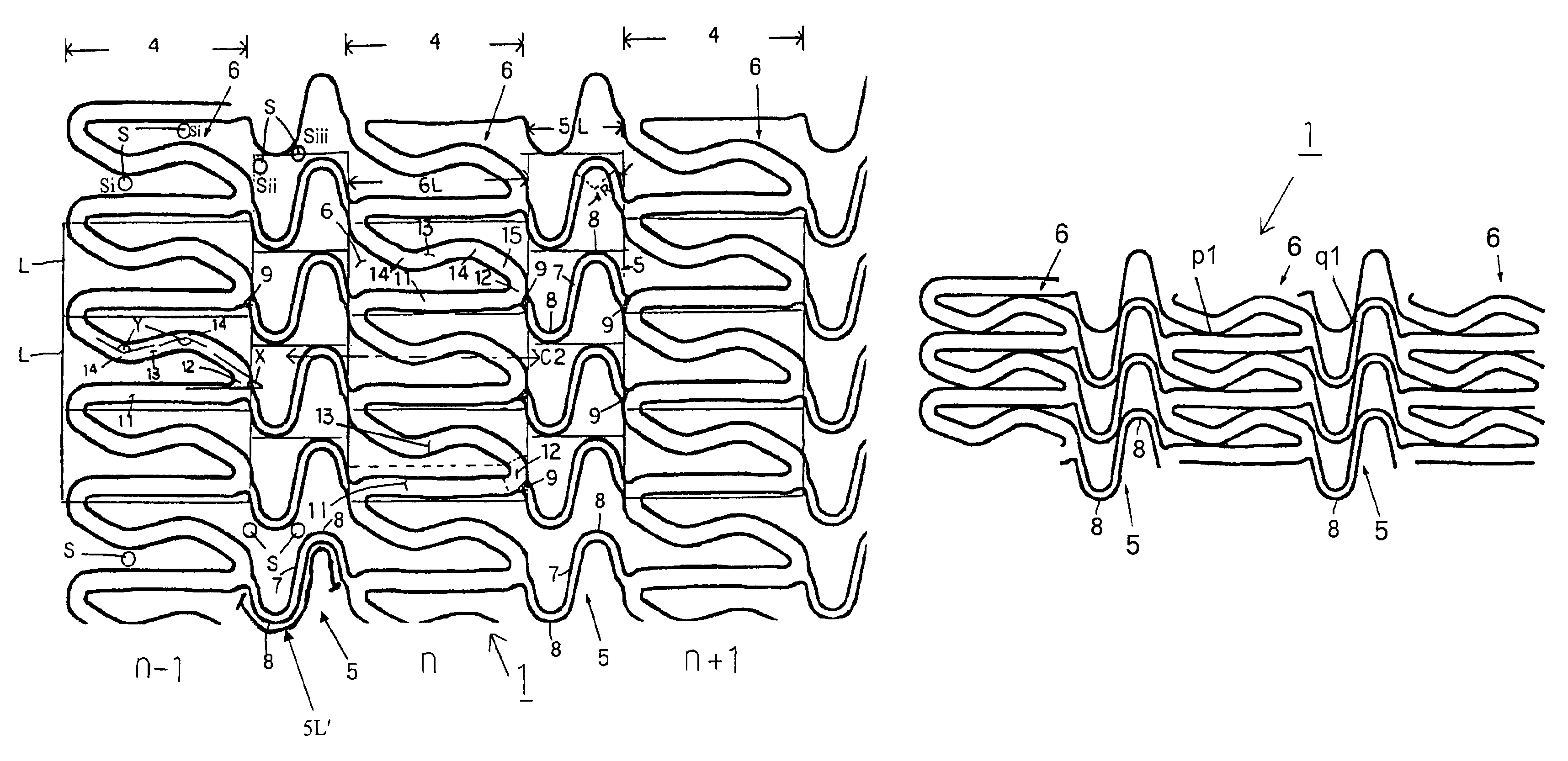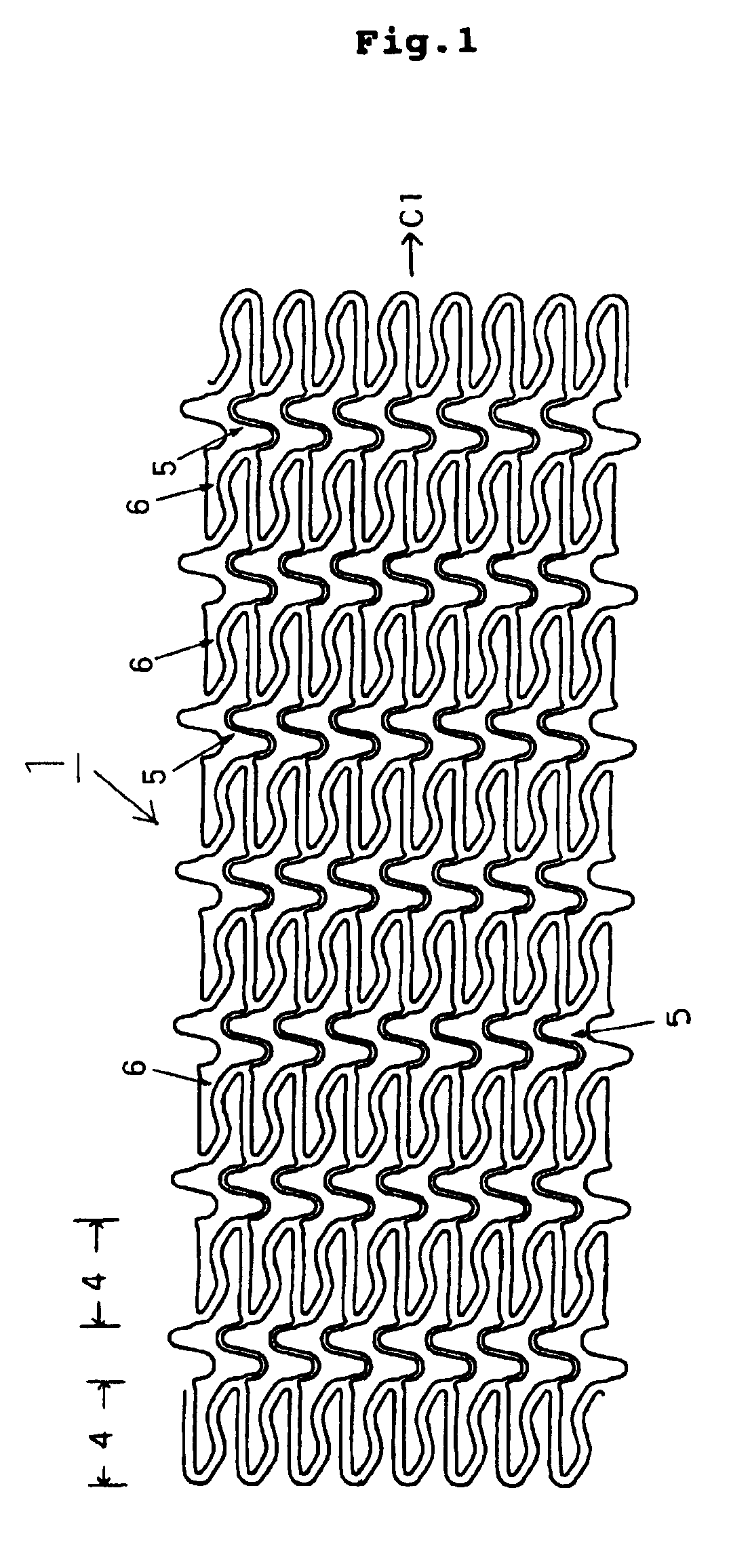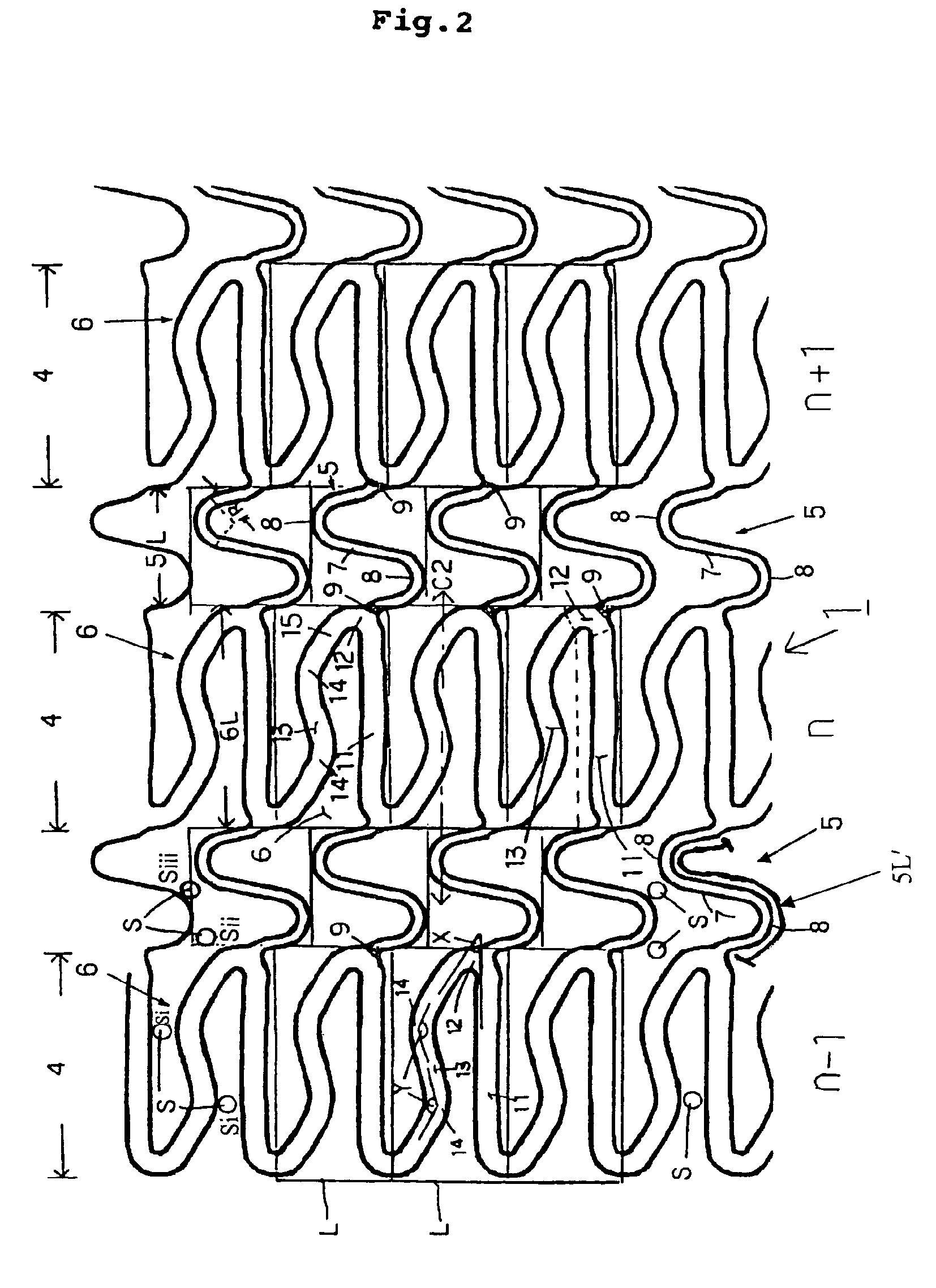Stent
a stent and stent technology, applied in the field of stents, can solve the problems of lack of flexibility, lack of flexibility, and inability to achieve the effect of radial sustaining force, and achieve the effect of more flexibility
- Summary
- Abstract
- Description
- Claims
- Application Information
AI Technical Summary
Benefits of technology
Problems solved by technology
Method used
Image
Examples
example 1
[0095]For evaluating a difference in radial sustaining force depending upon an angle after expansion in a stent A(B) constituted of components 19 formed of a generally-17 and a generally-S-shaped connector portion 18 each as shown in FIG. 10, there were prepared two stents, each stent having the components 19 different in number in the circumferential direction, a stent A (number of arranged components: 8) and a stent B (number of arranged components: 6) and the stents were evaluated for radial sustaining forces and compared.
[0096]Stent A:
[0097]
Number of arranged component 198Width of strut of cells 170.12 mmThickness of strut of cells 170.10 mm1 θ angle after expansion to 3 mm60°
[0098]Stent B:
[0099]
Number of arranged component 196Width of strut of cells 170.12 mmThickness of strut of cells 170.10 mm1 θ angle after expansion to 3 mm81°
[0100]For the evaluation, each stent was expanded so as to have a diameter φ of 3 mm and placed in a silicon tube placed in a chamber, then, pressure ...
example 2
[0103]A stent shown in FIG. 1 was prepared, and the radial sustaining force thereof was compared with the counterparts of conventional stents 201 (FIG. 11) and 241 (FIG. 12). Further, the flexibility of the prepared stent was compared with that of the stent 201. In the stent 1, the ratio of the length 6L of the cell 6 in the axial direction of the stent and the length 5L of the connector portion 5 in the axial direction of the stent was determined such that on the basis that the length 6L of the cell 6 in the axial direction of the stent was taken as 100, the length 5L of the connector portion 5 in the axial direction of the stent was made 59. The stent was evaluated for a radial sustaining force in the same manner as in Example 1, and it was evaluated for flexibility by a four-point bending method. Table 2 shows the results of measurement of the radial sustaining force, and Table 3 shows the results of measurement of the flexibility.
[0104]
TABLE 2(Results of measurement of radial su...
example 3
[0107]A stent 1A shown in FIG. 6 (FIG. 7) and a stent 1B shown in FIG. 8 (FIG. 9) were measured and evaluated for radial sustaining forces and flexibility in the same manner as in Examples 1 and 2. In the stent 1A or the stent 1B, the ratio of the length 6AL, 6BL of the cell 6A, 6B in the axial direction of the stent and the length 5AL, 5BL of the connector portion 5A, 5B in the axial direction of the stent was determined and formed such that on the basis that the length 6AL, 6BL of the cell 6A, 6B in the axial direction of the stent was taken as 100, the length 5AL, 5BL of the connector portion 5A, 5B in the axial direction of the stent was 59. Table 4 shows the results of measurement of the radial sustaining force, and Table 5 shows the results of measurement of the flexibility. As is clear from Tables, it has been shown that the stent 1A and the stent 1B give substantially the same results as those of the stent 1.
[0108]
TABLE 4(Results of measurement of radial sustaining force)Ste...
PUM
 Login to View More
Login to View More Abstract
Description
Claims
Application Information
 Login to View More
Login to View More - R&D
- Intellectual Property
- Life Sciences
- Materials
- Tech Scout
- Unparalleled Data Quality
- Higher Quality Content
- 60% Fewer Hallucinations
Browse by: Latest US Patents, China's latest patents, Technical Efficacy Thesaurus, Application Domain, Technology Topic, Popular Technical Reports.
© 2025 PatSnap. All rights reserved.Legal|Privacy policy|Modern Slavery Act Transparency Statement|Sitemap|About US| Contact US: help@patsnap.com



